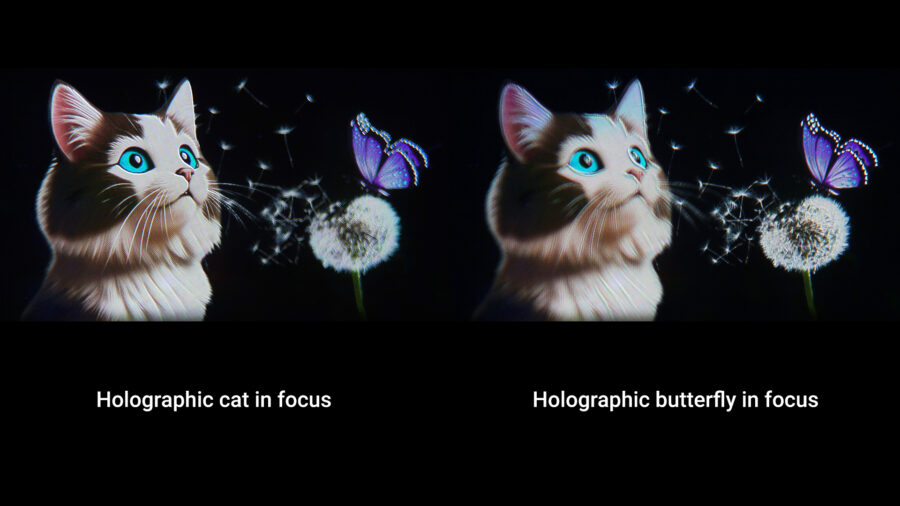
In Augmented Reality, Virtual Reality and Mixed Reality News
January 17, 2024 – VividQ, a 3D deep-tech start-up, has today announced two commercial developments as a result of the company’s latest technological breakthrough that it states enables it to now deliver ‘retina resolution’ computer-generated holograms.
VividQ shared images of real holograms projected through high-performance 4K display hardware. According to the company, the ability to deliver these retina resolution computer-generated holograms means that next-generation virtual reality (VR) headsets will be able to offer unparalleled levels of immersion and realism to users.
To highlight just how close this technology is to market, VividQ has announced that these retina resolution holograms are displayed using a high-performance LCoS (liquid crystal on silicon) display from JVCKENWOOD (JKC). VividQ stated that its commercial partnership with JKC will see the two companies work closely to target a wide range of AR and VR applications.
VividQ noted that its 4K images showcase how it is now possible to render holograms with life-like resolution and vivid color. The company’s new milestone in image quality is vital in all manner of virtual, augmented and mixed reality applications, especially gaming, where the impact of holography will be first felt. In fact, according to VividQ, holography is no longer a far-fetched technology, but is in fact now a core component critical to the success of next-generation XR experiences.
Yoshio Sonoda, CTO at JKC commented: “Holography will deliver a paradigm shift in consumer experiences, especially in a market like VR, where limitations in current technology are holding it back from delivering the kind of jaw-dropping experience that consumers want. We are really pleased to be partnering with VividQ and seeing our cutting edge LCoS displays be used to push the boundaries of VR and AR.”

“holographic display is not only feasible, it is inevitable.”
In addition to the JKC partnership, VividQ also announced that it is commercially engaged with a “world-leading consumer electronics company” to introduce holographic display technology into its future product roadmap. The company noted that this commercial relationship represents a significant step in bringing holography to consumers.
Commenting on the two new commercial partnerships, VividQ’s CEO Darran Milne stated: “Just a few years ago, displaying dynamic and interactive content via holography was seen as pure science fiction fantasy. Then, more recently, it was seen as possible but only with poor image quality. Time and time again we’ve broken down the barriers between this revolutionary display technology and the real-world.
“By showing retina resolution holograms running on readily available components from JKC, and confirming that our technology is already commercially available, we are proving to the market that holographic display is not only feasible, it is inevitable.”
According to VividQ, computer-generated holography improves the user experience of VR and MR in three principle ways: Firstly, holograms can be adjusted to compensate for a user’s eyesight, enabling built-in prescription correction without glasses – reducing the bulk and weight of a headworn device; Secondly, consumers can dynamically switch their focus between digital objects at varying distances, reducing eye fatigue and enabling them to game for longer; And thirdly, consumers can bring objects up close and focus on them without suffering from vergence accommodation conflict (VAC), which can induce or facilitate negative side effects such as headaches, eye-strain, or nausea.
Alfred Newman, VividQ’s Head of Research said: “Using the 4K LCoS from JKC we are now able to achieve acuity-limited retinal resolution holograms with full 3D focus and a large field of view. This enables a unique display which for the first time is capable of matching both the resolution and real-life focus cues expected by the eye, resulting in a more natural viewing experience than ever before.”
For more information on VividQ and to learn more about its retina resolution computer-generated holograms, please visit the company’s website.
Image credit: VividQ
About the author
Sam is the Founder and Managing Editor of Auganix. With a background in research and report writing, he has been covering XR industry news for the past seven years.
